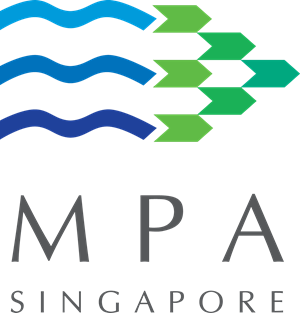The challenge
Preparing industry for the hazards of ammonia-powered operations
ASLET is supported by the Australian and Singaporean governments and is co-delivered by CSIRO with MPA Singapore
As the maritime industry shifts toward low emission fuels, ammonia has emerged as a strong candidate for its potential to significantly reduce greenhouse gas emissions. However, ammonia is toxic and requires careful handling and emergency preparedness. Without specialised training, the risks to workers, vessels and port operations are considerable.
The project tackles a critical workforce capability gap by equipping maritime and port personnel with the knowledge and skills to safely manage ammonia. This supports industry-wide decarbonisation goals while improving workplace safety and emergency response capability across the maritime supply chain.
Our response
Delivering applied training for safer ammonia use
To mitigate the safety risks of using ammonia as a maritime fuel, the project is designing, developing and piloting a specialised training program for maritime and port professionals.
The program builds on proven ammonia safety frameworks used in other industries, adapting them to suit the unique operational, technical and regulatory needs of the maritime sector.
The training is being developed through close industry consultation and scenario-based workshops to ensure it reflects real-world operational conditions in both Australia and Singapore. It includes:
- Practical, scenario-based modules tailored to maritime and port operations
- Hands-on training using specialised facilities, including live ammonia release exercises at the Australian Maritime College's Bell Bay campus
The program will be delivered by the Australian Maritime College (AMC) at the University of Tasmania and is being developed in partnership with TasRex Pty Ltd and CSIRO with input from the US-based Ammonia Safety & Training Institute (ASTI). It will fill key safety training gaps and support the safe integration of ammonia, and ammonia energy technologies into the clean energy mix.
By improving safety awareness, operational competency, and technical confidence, the project helps reduce technology costs, supports emissions reduction, and fosters new skills and job creation in the Asia–Pacific region. These outcomes contribute to economic growth and strengthen Australia’s position as a leader in maritime decarbonisation and safety innovation.
The results
Setting a new standard for ammonia safety
The ammonia safety training program is set to deliver transformative and lasting benefits for the maritime and port sectors by supporting the safe adoption of ammonia as a low emission fuel.
A curriculum is being developed targeting maritime and port operations streams. Each stream will be structured as an intensive short course, combining theoretical modules with practical sessions. These include hands-on training at the Australian Maritime College’s firefighting facilities in Bell Bay, Launceston.
A live ammonia release exercise will provide participants with essential experience in managing ammonia-related incidents in a controlled, industry-standard environment.
Extensive consultation with Australian and Singaporean stakeholders, including industry partners, regulators, and academic experts, is shaping the curriculum to ensure it aligns with operational realities and regulatory expectations.
The program aims to:
- Design, develop, and pilot a comprehensive safety training program for maritime and port personnel working with ammonia
- Create practical training for first-time users of ammonia in developing and deploying ammonia energy technologies and systems
- Identify and address key operational requirements and hazards of using ammonia as an energy carrier (or fuel) in maritime systems
- Build long term capacity to support ammonia use as a maritime fuel and enable technology deployment
- Equip professionals with practical, scenario-based training for safe ammonia handling
- Establish a standardised, industry-led training framework
- Build long-term capacity to support ammonia as a low emission maritime fuel
- Foster Australia-Singapore collaboration through shared expertise and training initiatives
The program strengthens safety culture, improves emergency response, and reduces operational risks to advance technical and commercial readiness for ammonia use in shipping. It also supports the development and demonstration of emerging ammonia energy technologies in real maritime environments, which is a key step toward low-emissions solutions. While many technologies are relatively mature, applying them in ports and vessels is essential for commercial adoption.
The program’s scalable design enables continued development beyond the initial phase, supporting broader decarbonisation and energy transition across the region and the global maritime sector.
Want to learn more?
For more information about ammonia safety training, contact: hossein.enshaei@utas.edu.au

